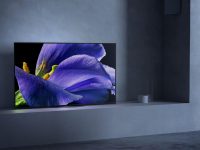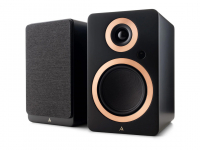
Great things come in small packages…
Few things in hi-fi are as iconic as the die-cast casework that frames Cyrus‘ range of products. Its shoebox form is known the world over and can trace its roots all the way back to the Cyrus ‘One‘ amplifier back in 1984 – an amp that was many an audiophile’s first flirtation with proper sound. Its half size form has seen little change to its current guise since the 1990’s – and it’s so integral to the Cyrus ethos, that all but two of a twenty-deep range remain clad in it today.
Of this well rounded assortment of components, we’re going to be looking at the multi award-winning ‘6’ series – Cyrus’ bread-and-butter range. This however is anything but basic hi-fi.
Whilst Cyrus are also known for their fantastic range of upgrades for their equipment (having a range of power supplies, power amplifiers, CD transports and DACs), the 6 series has at its heart 3 fairly traditional bits of kit – the 6A amplifier, the CDi CD player, and the 6 DAC, a combination amplifier with DAC built in.

Diminutive in size, not in sound.
Starting with the grunt end of the system, the two amplifier choices here are effectively the same amp (using the exact same amplifier module), but with one very important difference. The inclusion of a Digital to Analogue converter in the 6 DAC offers potential to upgrade the quality of sound from your entire digital system in one fell swoop. If you’ve got a slightly long-in-the-tooth CD player lurking on your rack, or are thinking of getting on the PC audio bandwagon, the 6 DAC can transform mediocre sound into top class high fidelity. With 2 optical inputs, alongside 2 digital coaxial, you could even plug in your television for a healthy boost over the usually anaemic in-built speakers.
For those with their digital side already sorted, the 6A comes in at a fairly substantial discount over its counterpart. The amplifier is a tidy 40w per channel – and it should be noted at this point that given the size of the case, this is quite an achievement. Inside is a proper transformer, rather than less consistent ‘digital’ amplification being used. There are 6 line inputs and owing to some clever internal software, all of these inputs are able to be labelled individually – as well as a host of other changes that make operation much more pleasant than most. Speaker terminals are the BFA type, rarely seen these days outside of Cyrus themselves. Plugs are provided and will need to be used on un-terminated cables, but some 4mm banana plugs are able to fit as well.
The CDi is Cyrus’ latest product in the range and is an amalgamation of previous models from the 6 series and above. It’s refreshing to see that a company who are now very much a part of the PC age still catering so well to the much-loved format. No quick and easy option for Cyrus, oh no! A few years ago, Cyrus took it upon themselves to develop their own servo technology for their CD players. When a CD player is designed, most manufacturers will outsource the software that runs the CD mechanism, its lens and all of the disc reading data, from the company that makes the drive. Cyrus decided that in such a demanding application, this wasn’t enough for the product that they wanted to make. Their proprietary Servo Evolution software is now in its second iteration, and its list of benefits is plentiful. The software is able to offer up to 5 times fewer data errors than a standard drive, requires less error correction and is able to operate in a much more stable manner than a regular drive. All of this is in pursuit of one thing – better sound, and such singular dedication to a now ageing format is a noble cause.
In the course of our listening tests we used a range of speakers, and it became clear that the idiosyncrasies of the Cyrus sound tended to favour some sets more than others. I’d written down the words ‘fast’, ‘articulate’, ‘dynamic’, ‘lithe’ all before the first track (Bodysnatchers by Radiohead played from the original In Rainbows CD release) had finished. The Cyrus was out of the gates and pelting down the track, barely stopping to breathe. Its handling of transients in what is a very detailed, technical track, was superb. One slight disadvantage to this was a slightly dry low frequency showing. The bass wasn’t missing, but it’s own pace and veracity meant it had no tendency to hang about – and this left the sound feeling a little bit light. The solution to this (as with any system) was all about matching ancillaries. We went with the superb Dynaudio range, namely the DM2/7 bookshelf, and DM3/7 floorstanders. No slouches in the bass department, these were the perfect partner to add some depth to the low end. Good results were also achieved with the Cambridge Aero range, and these are a recommended match up and well worth an audition.
The soundstage was vast in width and depth, suffering only slightly with height, but this was a very minor gripe. Using Qobuz from a laptop straight into the USB of the 6DAC gave access to an abundance of great new jazz albums, and the Tingvall Trio’s Beat album showed off the wonderful separation that the amplifier is capable of. Similarly, plugging in a cheap and cheerful CD deck through its optical output brought about great changes in all aspects of the sound, all for the positive.
When a hi-fi system excels the sum of its already brilliant parts, a manufacturer has done their job well. It’s clear that this system in any of its guises was designed with a singular approach towards sheer enjoyment; a tenacious, full throttle sound. It will thank you for careful partnering, and when matched well it’s one of the very best in its price range.
Shop for Cyrus on the Richer Sounds website.
Author – Chris, Liverpool store





